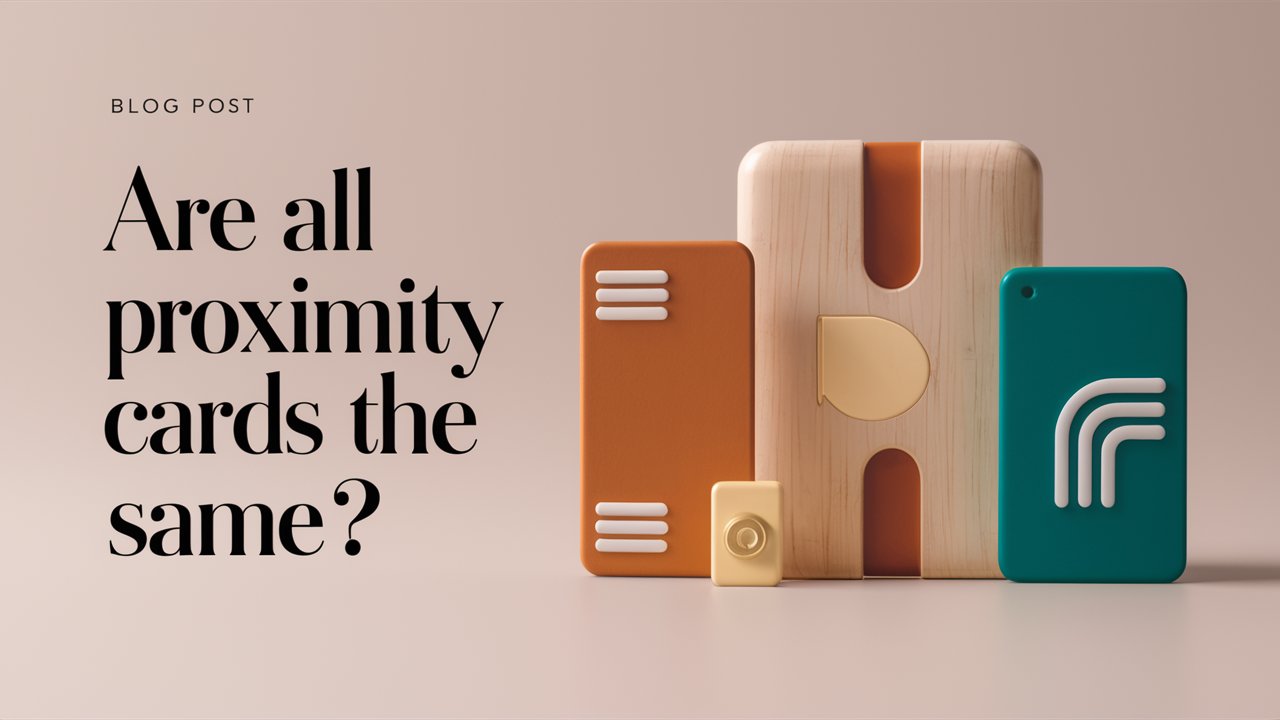Have you ever wondered how some people seem to glide through secure doors with just a wave of their hand? The secret lies in proximity cards, the silent guardians of modern access control systems. These sleek cards have revolutionized the way we think about security and convenience, eliminating the need for clunky keys and providing a user-friendly experience.
What are Proximity Cards?
A proximity card, also known as a proxy card or RFID (radio frequency identification) card, is an access control credential used to allow authorized individuals to enter secure areas. They work by transmitting a unique code when placed near a card reader.
Instead of having to physically insert or swipe the card, the reader can detect the card’s signal from a short distance away, typically a few inches. This provides a convenient hands-free way to authenticate yourself for entry.
Are All Proximity Cards the Same?
No, not all proxy cards are the same. Different types use varying technologies and frequencies. Let’s explore the main types:
- The Veterans: Low-Frequency 125 kHz Cards
The low-frequency 125-kilohertz prox cards were the pioneering proximity technology invented way back in the 1970s. Even with newer smart card variants emerging, these 125 kHz workhorses remain extremely widespread in legacy access systems today due to their simplicity and backward compatibility.
Read More Articles: Can the Salesforce Optimizer App Assist with Optimising Salesforce for Mobile Use?
Passive Operations
A key characteristic is that 125 kHz cards are passive, meaning they contain no battery or chip. They simply use the electromagnetic energy from the reader’s signal to induce and transmit their pre-programmed data like facility and ID codes back to the reader.
Data Formats and Security
Data is typically formatted in basic Wiegand protocols like 26-bit or 37-bit formats, providing a limited credential set. While simple and low-cost, this also means virtually no security beyond the uniqueness of ID numbers.
Construction and Durability
The construction is the classic rigid clamshell design made of plastic, able to withstand significant wear and tear. Their thickness also allows ample room for printing graphics or text.
Affordable and Compatible
A major pro is the extreme affordability of these low-tech cards, with unit costs often under $1-2. Their simplicity also ensures very high compatibility across virtually any 125 kHz proximity reader or access control system.
- The Smartcard Upgrade: High-Frequency 13.56 MHz
Representing a major technological advance, high-frequency (HF) 13.56 MHz smart cards pack far more sophistication and security into an access credential. Instead of just transmitting static data, they enable advanced two-way encrypted communications with readers.
Smarter Data and Encryption Protocols
HF cards leverage more robust data formats and transmission protocols like MIFARE, DESFire, and iCLASS. This allows for significantly higher data capacity, encryption with keys like 128-bit AES, and mutual authentication between the card and reader.
Chip-Based Construction
Construction uses an embedded RFID chip plus antenna coil, resulting in a thinner, flexible, credit card-style form factor. The chip and any printing are visible on the outer surface.
Applications Beyond Access Control
The increased memory and data transmission allows for supporting multiple secure applications on a single smart card beyond just physical access, such as:
- Computer login
- Cashless payments
- Transit passes and more
Higher Cost, Better Security
While more expensive than legacy prox cards, the security advantages of encrypted HF smart cards make them highly favored for new deployments in corporate, government, and other sensitive environments.
Read More Articles: Does Salesforce Offer Customization?
- The Future Ultra-Wideband: Ultra-High Frequency (UHF/RAIN)
On the cutting edge lies ultra-high frequency (UHF) radio frequency identification (RAIN RFID) technology operating from 860-960 MHz. This enables entirely new capabilities for access credentials despite some trade-offs.
Incredibly Long Read Ranges
UHF supports astonishingly long read ranges of 10-30 feet or more due to the high-frequency signals. However, the tradeoff is an inability to be read through any metal surfaces or liquids, unlike LF/HF.
Massive Data Capacity
The higher frequencies allow for incredibly fast data rates of up to 640 kbps and a massive memory capacity of over 1MB. This supports advanced telemetry, sensor, and portable data file storage use cases.
Active vs. Battery-Assisted
Passive UHF cards come in active (battery-powered) or battery-assisted passive variants, with varying capabilities and power requirements impacting longevity.
Asset Tracking Dominance
While UHF/RAIN lags behind LF/HF for mainstream physical access control adoption due to cost and infrastructure needs. It has rapidly become the go-to for automated asset tracking and inventory applications.
- HID Prox Cards
The HID Prox Card revolutionized access control when they were introduced, leveraging radio frequency identification (RFID) technology to provide secure and convenient entry. These cards remain a cornerstone in the industry due to their reliability and ease of use.
Contactless Operation
A standout feature of HID Proxy cards is their contactless functionality. They operate by communicating with a reader through RFID technology. When the card is within range, the reader’s signal powers the card, enabling it to transmit its unique ID number back to the reader for authorization.
Data Formats and Security
HID Prox cards typically use industry-standard formats such as 26-bit or 37-bit Wiegand protocols. While these formats ensure basic functionality and compatibility, the security relies primarily on the uniqueness of each card’s ID number. Although not as advanced as newer smart cards, they provide a cost-effective solution for many access control systems.
How to Identify Proximity Cards
While these cards may look similar on the outside, there are ways to determine the specific type:
Printed Detail
- Most cards have printed details like the card number, facility code, technology used (e.g. Prox, iCLASS), and sometimes the operating frequency
Read More Articles: How Do Cybersecurity Solutions Help Prevent Data Breaches
Shape and Construction
- Low-frequency prox cards are typically thicker rigid clamshell cards
- High-frequency smart cards are thinner, flexible, and often have electronic chips visible
Reader Frequency
- If you have access to the reader, you can identify the card frequency based on what readers it works with (e.g. 125 kHz for most prox readers)
Testing Tools
- Radiofrequency test tools can be used to scan and identify the exact technology and frequency
Conclusion
From low-frequency workhorses to high-frequency smart cards to ultra-high-frequency marvels, proximity access credentials have evolved considerably while each category remains relevant. As technologies and security needs advance, understanding the unique traits and capabilities allows specifiers and end-users to make the most informed credential choices.
Proximity Card Manufacturers
Looking to enhance the security and efficiency of your organization? Bristol ID offers high-quality proximity cards. Our cards offer access control, durability, and customizability to meet your specific needs. Whether you’re managing a corporate office, educational institution, or healthcare facility, our prox cards are designed to provide reliable and secure access.
Read More Articles: Does Salesforce Offer Customization?
FAQs
How do Proximity Cards Work?
These cards work by emitting a low-frequency radio signal that is received by a card reader. When the card is close to the reader, it transmits a unique ID number, which the reader verifies against an authorized list to grant access
Can The Proximity Card Be Customized?
Yes, proximity cards can be customized with company logos, employee photos, and specific access permissions. They come in various formats such as standard cards, key fobs, and adhesive tags for added versatility
How are Proximity Cards Different from Contactless Smart Cards?
While both use RFID technology, contactless smart cards store more data and operate at a higher frequency. They must be held closer to the reader and are used for applications requiring higher security and data handling, such as payment systems.








